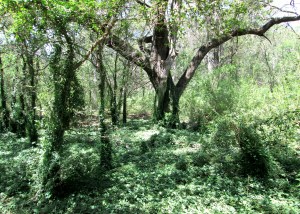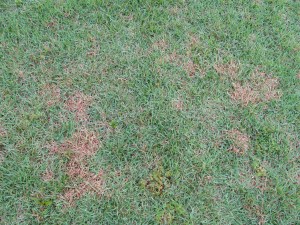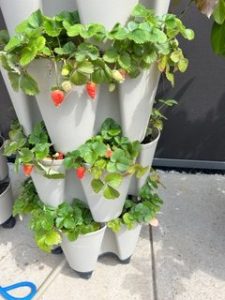Coral bark maple and possumhaw holly are bright spots in the winter landscape
Published 3:03 pm Monday, January 27, 2020

- Katy Barone, Smith County Master Gardeners
It’s winter. Summer and fall color have given way to muted sepia tones of brown and gray — an austere time indeed. Be of good cheer! There are some bright spots in this stark season. Take, for example, the coral bark maple and possumhaw holly — two vastly different species with one thing in common: unmistakable winter beauty.
CORAL BARK MAPLE
Trending
The coral bark maple is a form of Japanese maple (Acer palmatum) known as “Sango kaku.” This name literally means “coral tower,” from the origin sango, meaning “coral,” and kaku, meaning “upward growing.” This Asian native is known for its vibrant coral red bark that intensifies in the winter. Its upright, vase-like habit is reminiscent of coral rising from a reef. These trees are hard to miss in a winter landscape. A pretty center trunk gives way to graceful arching branches, all beautifully hued — a scarlet sculpture. Breathtaking!
If its winter beauty weren’t enough, this Japanese maple sports pink early foliage in spring, giving way to soft, vibrant, eye-catching lime green, persisting until fall when leaves turn a brilliant yellow-gold. Thus, this specimen boasts lovely year-round interest.
Surprisingly tough, the coral bark maple grows 20 to 25 feet at mature height, with a graceful open habit that requires little to no pruning. For vibrancy, this species requires sun, but with our unforgiving Texas summers, afternoon shade is best to prevent stress and scorching. As all Japanese maples, this tree prefers moist, well-drained, slightly acidic soil. Sango kaku is an all-around gem and a wonderful choice for the East Texas landscape.
POSSUMHAW HOLLY
Moving a little closer to home, consider the possumhaw holly. This Texas and Louisiana native, Ilex decidua, is a showstopper. You may have noticed it along medians or brightening woodlands. Different than its cousins, this holly does not maintain its leaves year round. Also known as deciduous yaupon or winterberry, the possumhaw produces small, glossy oval leaves lasting spring through autumn. In November to early December, the leaves begin to change to a light yellow and drop. Revealed are delicate gray stems covered in bright orange-red berries. The sight of these crimson clusters against a cerulean sky will literally stop you in your tracks.
This tough holly can be found throughout Texas, and other parts of the U.S., zones 5 through 9. It is a great addition to both rural and urban landscapes, well tolerant of many types of soils and moisture content. This large shrub or small tree enjoys full sun, growing to a mature height of 15 to 30 feet. It doesn’t mind wet feet, as it grows naturally along river bottoms and creek beds. Only the female trees are fruiting, so it is important to purchase when berries are present. No need to worry about buying a male tree, as other yaupon and holly species in the area provide adequate pollination for berry production. In addition to the native species of possumhaw, there also are hybrids available, sporting a variety of berry hues. Warren’s Red (red berries), Council Fire (orange berries) and Byer’s Golden (yellow berries) are just a few.
Trending
As an added bonus, this hardy species plays host to a wide variety of small mammals and birds — a bountiful and crucial source of winter nourishment. It is fun on a cold winter day to watch furry and feathered friends come and go as they delight in helping themselves. If you have never seen a swarm of cedar waxwings descend upon these hollies, stripping them bare within minutes, it is quite something to behold.
If you are interested in taking a look at either of these species, both of them can be found in our very own Master Gardener demonstration gardens at the Tyler Rose Garden. The coral bark maple is nestled in the Shade Garden and a spectacular possumhaw specimen stands tall and proud in the IDEA Garden. (Catch it now before the birds come!) We invite you for a visit to stroll through the grounds and be inspired in these wintry days.
The Smith County Master Gardener program is a volunteer organization in connection with the Texas A&M AgriLife Extension Service.







